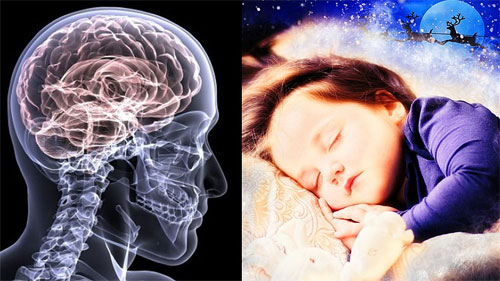Evolution of Sleeping: Snoring and Sleep Apnea Epidemic
When you add it all up, the average person sleeps for about one-third of their life. Clearly, sleep is an important part of life, yet scientists still do not fully understand all the reasons for it. Despite this, sleep is one of the most critical survival, for humans and other mammals on this planet.

At one time, scientists thought that sleep was a passive state of being. This means that our brain and body shut down to recover. Now, we know that sleep is actually quite different. It is an active time, when necessary natural processes must occur to help you function on a day-to-day basis. For example, it is a time for cell repair, memory building and learning integration.
Non-rapid Eye Movement Phase
Sleep typically comes in two phases: non-rapid eye movement (NREM) and rapid eye movement (REM). During NREM, there are three stages known as N1, N2 and N3.
In stage N1, the body is slowly drifting into sleep. Our heart rate and breathing begin to slow. Also, eye movements slow down, muscles relax, and body temperature and blood pressure decrease. If you can wake up during this stage, you may not realize that you were asleep.
Stage N2 is essentially a continuation of N1. At this point eye movement stops, heart rate decreases, and muscles relax even further. We spend about 50 to 60 percent of our time in this stage of sleep.
Stage N3 is what we may call “deep” sleep. Scientists refer to this stage as delta sleep or slow-wave sleep. This stage is essential because you need it to feel refreshed and able to take on the day. In this stage, it is very hard to wake a person. If awaken, one can become very disoriented. This is why many people don’t take naps longer than 30 minutes. If they slip into deep sleep, when they wake up they feel groggy and confused, making it difficult to get back to regular daily activity.
During N3, some important functions occur. First, the brain recovers from the day by processing and consolidating memories. As well, this stage also signals the parasympathetic nervous system to become more active. Therefore, this stage is important to healing, rejuvenation and healthy digestion.
It’s important to note that we spend less and less time in N3 as we continue to age.
Rapid Eye Movement Phase
After the three stages of NREM sleep, typically after about 90 minutes, we enter REM sleep. As the name suggests, your eyes will move rapidly from side to side while the lids are closed. It is unknown why we do this, but we suspect that it’s a result of dreaming.
During REM sleep, the heart rate and blood pressure increase. On the other hand, muscles in the arms and legs relax to the point of not being able to move. It is thought that we do this as a preventative measure so that we don’t physically act out our dreams. Interestingly, people are more likely to remember their parts of their dreams when they awake during the REM phase.
Finally, REM sleep is when the brain processes information from the previous day. It stores this data in long-term memory. Hence, most adults will spend 25 percent of their sleep time in the REM phase.
New Epidemic: Sleep Apnea and Snoring
The importance of sleep cannot be overemphasized. Although scientists have not yet discovered all the intricacies of sleeping, we know that we need sleep to maintain a healthy brain and for our body to function properly.

Despite the important processes that take place naturally during sleep, not everyone can get restful sleep. Insomnia, sleep apnea and snoring plague tens of millions of people every year. Hence, we are in grave need of innovations to help solve these sleeping disorders. This is especially important for modern lifestyles, when people want to work and enjoy leisure activities for the other 67% of the day. Frankly, there’s not much time to nap.
Luckily, innovation is underway to help people get better sleep. Snoring Source notes devices like Zyppah, a Mandibular Advancement Device (MAD), can offer much relief. Essentially, Zyppah is a mouth guard used to prevent snoring-related problems.
Doctors associate snoring with sinus problems or narrow nasal and throat cavities. For example, over time, throats become narrower and less muscular. Hence, often older people snore. Furthermore, a stuffy nose, bad sleeping position, smoking, throat problems, excess weight, and alcohol intake may result in snoring.
Snoring can evolve into a severe problem if the person develops sleep apnea. People with sleep apnea have a difficult time breathing while asleep. In addition, they may stop breathing while they sleep. In most cases, this will cause headaches, excessive sleepiness, and even lack of attention.
According to scientists and researchers, sleep is as a way of restoring and conserving energy. This may be the key reason why you feel energized after having a restful night’s sleep. On the other hand, if you aren’t able to get good sleep because of snoring and sleep apnea, then your brain and body can’t effectively recover. Consequently, this can lead to even less sleep and poor health.
Conclusion
We know sleep is a necessary part of living. We need to sleep in order to repair the body, integrate what we learn, and develop long-term memory. If we don’t sleep, natural physiological processes can’t occur. Hence, this leaves the body and mind feeling drained.
If your sleep is suffering because of problems like snoring and sleep apnea, it may be worth to try a device such as the Zyppah MAD. Of course, you can always ask your doctor for help.
With that said, before turning to sleeping pills, consider how diet and lifestyle could mitigate sleep problems. You may be able to support better sleep and respiratory function by healthier eating options. Lighter food during evening hours may improve the problem. Finally, there are certain lifestyle habits, such as doing HATHA YOGA and LAYA YOGA, that can help your body function and sleep better.
yogaesoteric
July 11, 2019
Also available in:
 Français
Français
